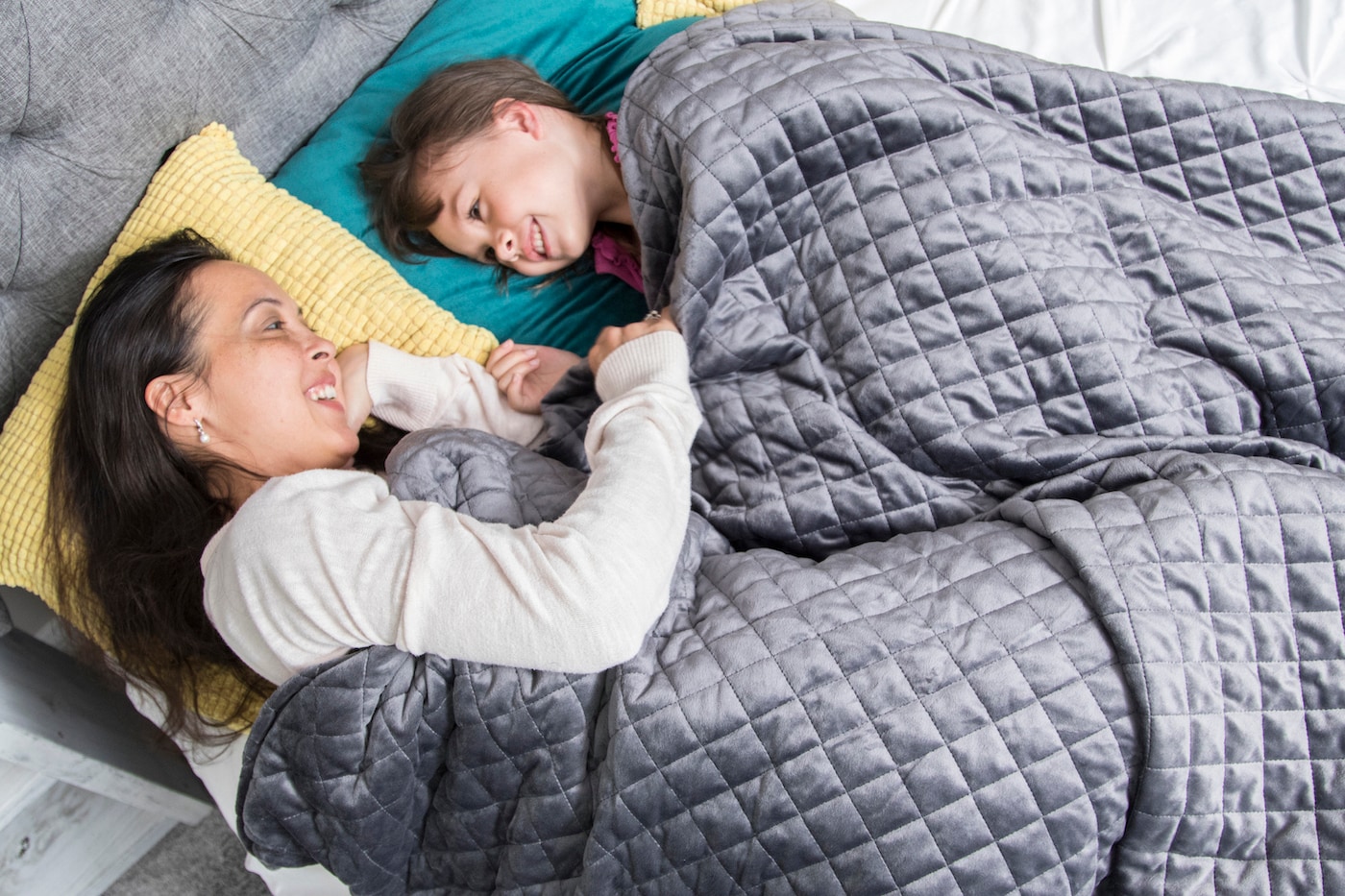A good night’s sleep is one of the most important aspects contributing to our overall health from an early age. Increasingly, the medical profession points to the benefits of sleep for cognitive health, strengthening the immune system, keeping to a healthy weight and more. Little wonder, then, that parents and caregivers are so preoccupied with making sure their kids enjoy quality slumber — and they’re open to trying all kinds of approaches to achieve their aim.
Weighted blankets are a recent trend in sleep and relaxation aids for adults. Heavier than ordinary blankets, they produce an additional pressure that mimics a hug and are said to help with sensory regulation, calming anxiety and easing insomnia.
Here, we weigh up the pros and cons of using a weighted blanket for kids.
When are weighted blankets safe? When not to use a weighted blanket for kids
Medical professionals are in agreement: weighted blankets should never be used for babies and toddlers, as they may restrict their movement and breathing during the night, posing a serious risk of suffocation as the child struggles with the blanket — with potentially disastrous results.
Weighted blankets are also not recommended for children (and adults) with sleep disorders such as sleep apnoea which affect their breathing during sleep. Heavy weights stopping them from moving freely in their sleep and getting enough air could pose too high a risk.
A better night’s sleep? Kids’ weighted blanket use at night
Weighted blankets have enjoyed a reputation as a useful tool in battling insomnia. But the facts don’t always stack up: research into the effects of weighted blankets on the quality of sleep is limited and lacking persuasive results — one UK study found that the blankets did not help children with autism spectrum disorder (ASD), who are less likely to sleep well than their peers, to sleep any better at night.
However, the blankets are widely reported to feel comfortable and relaxing for children while they are awake. Anxiety and stress are emotions that can weigh particularly heavily at night, preventing adults and children alike from enjoying a good night’s sleep. And with mental health issues increasingly prevalent among children, there’s even more to keep them tossing and turning at night.
On balance, however, the inconclusive benefits of weighted blankets for kids may not outweigh the risk of becoming trapped and uncomfortable under their heft overnight while supervised — a distressing and potentially dangerous experience for a child, and they are not recommended for unsupervised use during sleep.
Lightening the load: deep-pressure touch and stress
One area where weighted blankets appear successful is in calming and easing anxiety in children and adults. The blanket’s added weight aims to recreate the calming feeling of being held or hugged, supplying something known as deep pressure touch.
Deep pressure touch is said to be especially soothing for people with sensory sensitivities such as those with autism spectrum disorder (ASD) or attention deficit hyperactivity disorder (ADHD), helping to calm nervous system arousal. This is where therapy with a weighted blanket or other item can come into its own, helping to regulate a distressed child’s mood and put them in a more relaxed state.
Each child’s sensitivities differ, however, and some children report a feeling of claustrophobia under the restraint of the heavy weight. If you have a child who would benefit from deep pressure touch as a form of mood regulation, you may also wish to consider a less all-encompassing and potentially restrictive form of therapy, such as massage, or simply giving them a hug.
Using a weighted blanket for kids: things to consider
While medical professionals are united in recommending babies and toddlers steer clear of weighted blankets, when it comes to older children, particularly those with sensory sensitivities, some parents and caregivers may take a different view on using them for relaxation.
If you have taken a close look at the guidance on whether these blankets are safe for children, consulted a healthcare professional and decided the pros outweigh the cons, here are some crucial safety rules for using a weighted blanket, as recommended by an NHS trust:
- Kids must be supervised at all times when under the blanket.
- Your child must be able to remove or free themselves from the blanket without assistance. As a rule, kids’ weighted blankets must weigh no more than a maximum of 10% of the child’s own body weight.
- Never allow their head and neck to be covered by the blanket.
- Weighted blankets should be placed over the body and the child must not be rolled up inside them.
- The blanket must not be used overnight. Medical professionals recommend a maximum of 20 minutes’ use to create the desired effect.
- The blanket should fit your child’s size and must not drape over both sides of a bed, for instance.
- The blanket must never be used to restrain your child.
If there is any indication your child feels uncomfortable or anxious beneath the blanket, or if they are feeling sick or having difficulty breathing, then you must remove it immediately.
No matter your desire for your child to enjoy the benefit of deeper relaxation or a better night’s sleep, if you find yourself wondering about the safety of weighted blankets for kids, you should cease using them immediately. After all, knowing your children are safe and well takes the ultimate weight off your mind.


